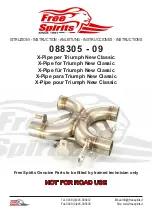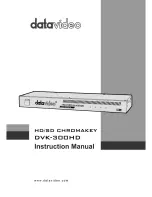
29
BOSCH PERFORMANCE LINE
Bicycle Owner’s Manual
29
cracks that lead to failure. It is very important that you
read The basics of metal fatigue below.
Let’s say you hit a curb, ditch, rock, car, another cyclist
or other object. At any speed above a fast walk, your body
will continue to move forward, momentum carrying you
over the front of the bike. You cannot and will not stay on
the bike, and what happens to the frame, fork and other
components is irrelevant to what happens to your body.
What should you expect from your metal frame? It
depends on many complex factors, which is why we tell
you that crashworthiness cannot be a design criteria. With
that important note, we can tell you that if the impact is
hard enough the fork or frame may be bent or buckled.
On a steel bike, the steel fork may be severely bent and
the frame undamaged. Aluminum is less ductile than
steel, but you can expect the fork and frame to be bent
or buckled. Hit harder and the top tube may be broken in
tension and the down tube buckled. Hit harder and the top
tube may be broken, the down tube buckled and broken,
leaving the head tube and fork separated from the main
triangle.
When a metal bike crashes, you will usually see some
evidence of this ductility in bent, buckled or folded metal.
It is now common for the main frame to be made
of metal and the fork of carbon fiber.
See Section B,
Understanding composites
below. The relative ductility
of metals and the lack of ductility of carbon fiber means
that in a crash scenario you can expect some bending or
bucking in the metal but none in the carbon. Below some
load the carbon fork may be intact even though the frame
is damaged. Above some load the carbon fork will be
completely broken.
The basics of metal fatigue
Common sense tells us that nothing that is used lasts
forever. The more you use something, and the harder you
use it, and the worse the conditions you use it in, the
shorter its life.
Fatigue is the term used to describe accumulated
damage to a part caused by repeated loading. To cause
fatigue damage, the load the part receives must be great
enough. A crude, often-used example is bending a paper
clip back and forth (repeated loading) until it breaks. This
simple definition will help you understand that fatigue has
nothing to do with time or age. A bicycle in a garage does
not fatigue. Fatigue happens only through use.
So what kind of “damage” are we talking about? On a
microscopic level, a crack forms in a highly stressed area.
As the load is repeatedly applied, the crack grows. At
some point the crack becomes visible to the naked eye.
Eventually it becomes so large that the part is too weak to
carry the load that it could carry without the crack. At that
point there can be a complete and immediate failure of
the part.
One can design a part that is so strong that fatigue life
is nearly infinite. This requires a lot of material and a lot
of weight. Any structure that must be light and strong will
have a finite fatigue life. Aircraft, race cars, motorcycles
all have parts with finite fatigue lives. If you wanted
a bicycle with an infinite fatigue life, it would weigh
far more than any bicycle sold today. So we all make a
tradeoff: the wonderful, lightweight performance we want
requires that we inspect the structure.
What to look for
• ONCE A CRACKS STARTS IT CAN GROW AND GROW FAST. Think about the crack as forming
a pathway to failure. This means that any crack is potentially dangerous and will only
become more dangerous.
SIMPLE RULE 1 : If you find crack, replace the
part.
• CORROSSION SPEEDS DAMAGE. Cracks grow more quickly when they are in a corrosive
environment. Think about the corrosive solution as further weakening and extending the
crack.
SIMPLE RULE 2 : Clean your bike, lubricate
your bike, protect your bike from salt, remove
any salt as soon as you can. Repair cracks in
the paint or powder coating.
• STAINS AND DISCOLORATION CAN OCCUR NEAR A CRACK. Such staining may be a warn-
ing sign that a crack exists.
SIMPLE RULE 3 : Inspect and investigate any
staining to see if it is associated with a crack.
• SIGNIFICANT SCRATCHES, GOUGES, DENTS OR SCORING CREATE STARTING POINTS FOR
CRACKS. Think about the cut surface as a focal point for stress (in fact engineers call such
areas “stress risers,” areas where the stress is increased). Perhaps you have seen glass
cut? Recall how the glass was scored and then broke on the scored line.
SIMPLE RULE 4 : Do not scratch, gouge or
score any surface. If you do, pay frequent
attention to this area or replace the part.
• SOME CRACKS (particularly larger ones) MAY MAKE CREAKING NOISE AS YOU RIDE.
Think about such a noise as a serious warning signal. Note that a well-maintained bicycle
will be very quiet and free of creaks and squeaks.
SIMPLE RULE 5 : Investigate and find the
source of any noise. It may not a be a crack,
but whatever is causing the noise should be
fixed promptly.
















































